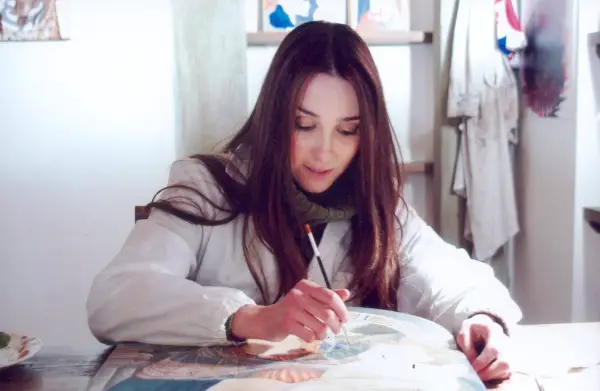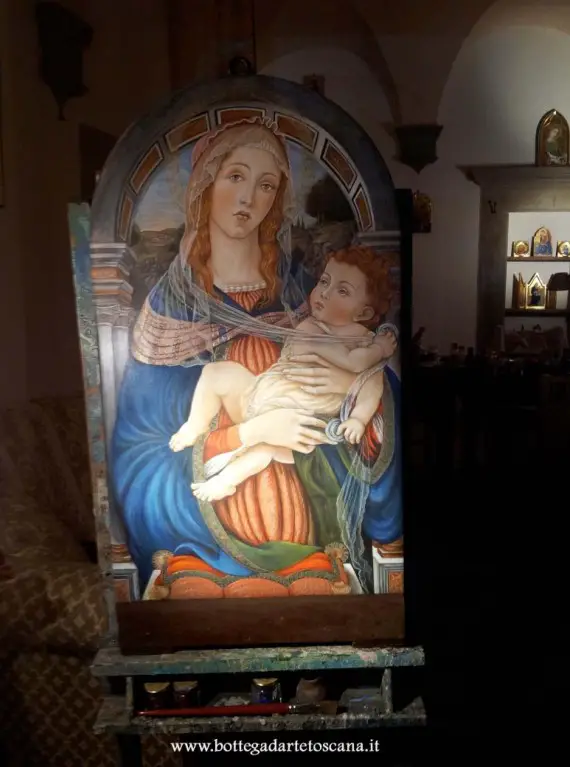
Silvia Salvadori was born in 1978 in Sinalunga, in the heart of Tuscany. She is a graduate of the “Duccio di Buoninsegna” Art Institute and holds a degree in Art Conservation from the University of Siena. Living in the city of the Palio, she has established spiritual and material ties with the surviving art workshops which preserve the pictorial traditions of the best artists of the Tuscan schools of the middle ages and the Renaissance.
 Silvia Salvadori creates an ideal continuity by resurrecting through her hands a tradition and know-how on their way to oblivion. The warm reflections of gold, the brocades of clothes, the ecstatic rapture of the saints, the mystic exchange of glances between the Virgin Mary and Infant Jesus, and the richness of Christian symbolism are all recreated with talent, refinement and dedication, and come to life in the works that Silvia is able to reproduce using the same artistic wisdom and skills of the medieval masters.
Silvia Salvadori creates an ideal continuity by resurrecting through her hands a tradition and know-how on their way to oblivion. The warm reflections of gold, the brocades of clothes, the ecstatic rapture of the saints, the mystic exchange of glances between the Virgin Mary and Infant Jesus, and the richness of Christian symbolism are all recreated with talent, refinement and dedication, and come to life in the works that Silvia is able to reproduce using the same artistic wisdom and skills of the medieval masters.
She makes use of poplar and linden panels, dust and leaves of pure gold (in order to make incisions through the use of burins purposefully created by the latest master engravers), and natural pigments mixed with egg yolk and egg tempera, following the instructions contained in the Book of Art by the Tuscan painter Cennino Cennini’s (c.1370 – c.1440), the techniques of italian tempera (tempera and gold on wood) painting, and in the Book of Giorgio Vasari (The Lives of the Most Eminent Painters, Sculptors, and Architects to Our Times), included a valuable treatise on the technical methods employed in the arts.
Silvia Salvadori’s work is probably the last precious testimonial that preserves and passes on a culture that represents the history of a people whose land and spirit can awaken a sense of wonder in our souls. Her works of art emanate from an interest which is, above all, accurate, masterly and characterized by ongoing research and experimentation. It reaches in time throughout the entire Tuscan region, starting from Arezzo, with the hidden treasures of its churches, moving onto Florence’s medieval art – which was perhaps overshadowed by the splendour of the renaissance, and finally reaching Siena, with the sacred art of its icons and Biccherne civic paintings with historical decorations on wooden covers containing the accounting records of the municipal era.
For more info visit: www.bottegadartetoscana.it/
The Art Shoppe is found right in the heart of Arezzo, a brisk walk away from Santa Maria della Pieve Church. Inside, Maestra Silvia Salvadori executes any reproduction of paintings by authors from XIIth to the XVIth centuries. The Gallery “Bottega d’Arte” is open Tuesday through Saturday, 4 – 7 PM.
